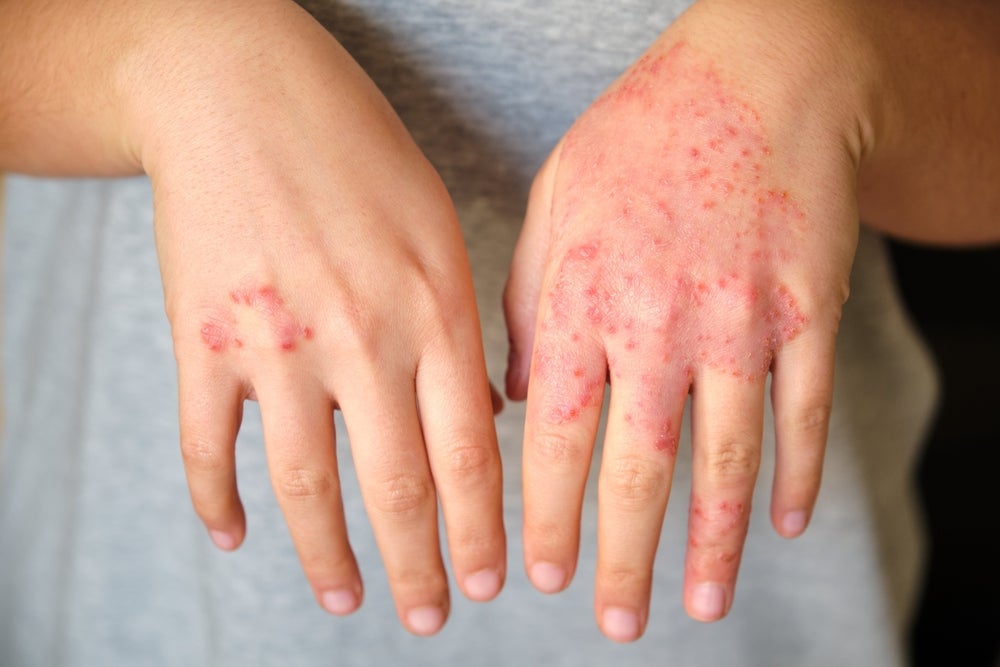The field of atopic dermatitis (AD) has been receiving great interest over the last few years with the approvals of both oral and topical Janus kinase (JAK) inhibitors across the seven major pharmaceutical markets (7MM: US, France, Germany, Italy, Spain, UK, and Japan). JAK inhibitors are a newer class of medication that has shown promise in treating various inflammatory conditions, including AD. These small molecules selectively inhibit one or more of the Janus kinase enzymes, which play a crucial role in the signalling pathways that mediate immune responses and inflammation. JAK inhibitors have emerged as a significant advancement in the treatment of AD due to their targeted mechanism of action (MoA), which can lead to improved efficacy compared to other therapies.
Incyte Dermatology’s Opzelura is a topical JAK1/2 inhibitor that has been approved for AD in the US. Its role in AD treatment has been explored, with completed clinical trials for Opzelura in AD involving diverse AD patient populations; the Phase III TRuE AD1 and TRuE AD2 studies were aimed at adolescents and adults, and the TRuE AD3 study was aimed at children. An additional Phase III study has also been completed for adolescents. Opzelura’s safety profile in AD is consistent with its known effects in other conditions, with careful monitoring required for potential blood count changes and infections. Specifically, in the two parallel, eight-week, Phase III clinical trials (TRuE-AD1, TRuE-AD2) comparing RUX 1.5% versus 0.75% cream twice daily versus vehicle in adolescents and adults aged 12 years and older with mild-to-moderate AD, both formulations met the primary endpoint of Investigator’s Global Assessment 0/1 (TRuE-AD1: RUX 1.5% was at 53.8%, 0.75% cream was at 50.0%, and vehicle was at 15.1%; TRuE-AD2: RUX 1.5% was at 51.3%, 0.75% cream was at 39.0%, and vehicle was at 7.6%). Both trials also met key secondary endpoints of Eczema Area and Severity Index 75 (TRuE-AD1: RUX 1.5% was at 62.1%, 0.75% was at 56.0%, and vehicle was at 24.6%; TRuE-AD2: RUX 1.5% was at 61.8%, 0.75% cream was at 51.5%, and vehicle was at 14.4%) and clinically meaningful reduction in itch, defined as itch-numerical rating scale reduction of approximately four points at week eight (TRuE-AD1: RUX 1.5% was at 52.2%, 0.75% cream was at 40.4%, and vehicle was at 15.4%; TRuE-AD2: RUX 1.5% was at 50.7%, 0.75% was at 42.7%, and vehicle was at 16.3%). No serious adverse events were reported (Traidl, Freimooser and Werfel, 2021). Among the marketed JAK1/2 inhibitors, a direct competitor of Opzelura is Eli Lilly’s Olumiant, which has been approved in the five major European markets (France, Germany, Italy, Spain, and UK) and Japan for moderate-to-severe atopic dermatitis in adult and paediatric patients aged two years and older. Olumiant is a dual JAK1/2 inhibitor that is functionally similar to Opzelura and therefore suppresses interferon gamma, interleukin (IL)-6, IL12/23, erythropoietin receptor, and granulocyte-macrophage colony-stimulating factor signalling. In patients with moderate-to-severe AD, Olumiant significantly reduced inflammation and pruritus, as well as improved quality of life and skin pain (Bonelli et al, 2024). Olumiant aims at patients with moderate-to-severe AD whereas Opzelura has been approved for mild-to-moderate cases of AD.
In recent years, other JAK inhibitors have been approved, including AbbVie’s oral JAK1 inhibitor Rinvoq across the 7MM for moderate-to-severe AD patients and Leo Pharma’s topical JAK1/2/3 inhibitor Correctim in Japan for AD patients. Additionally, the late-stage pipeline is filled with other JAK inhibitors, including Reistone Biopharma’s ivarmacitinib, Aclaris Therapeutics’ JAK1 inhibitor lepzacitinib, and the pan-JAK/spleen tyrosine kinase inhibitors from Zelgen (jaktinib hydrochloride) and Asana Bioscience (gusacitinib). The AD field has received increased popularity with regards to JAK inhibitors. Key opinion leaders revealed that JAK inhibitors – specifically oral JAK inhibitors – have been crucial in the fight against AD in moderate-to-severe patients, further highlighting the opportunity in the market. With the different targets seen across the pipeline agents and marketed therapies, comparative studies need to be conducted to show the differences in efficacy and safety between topical JAK therapies and oral JAK therapies.





